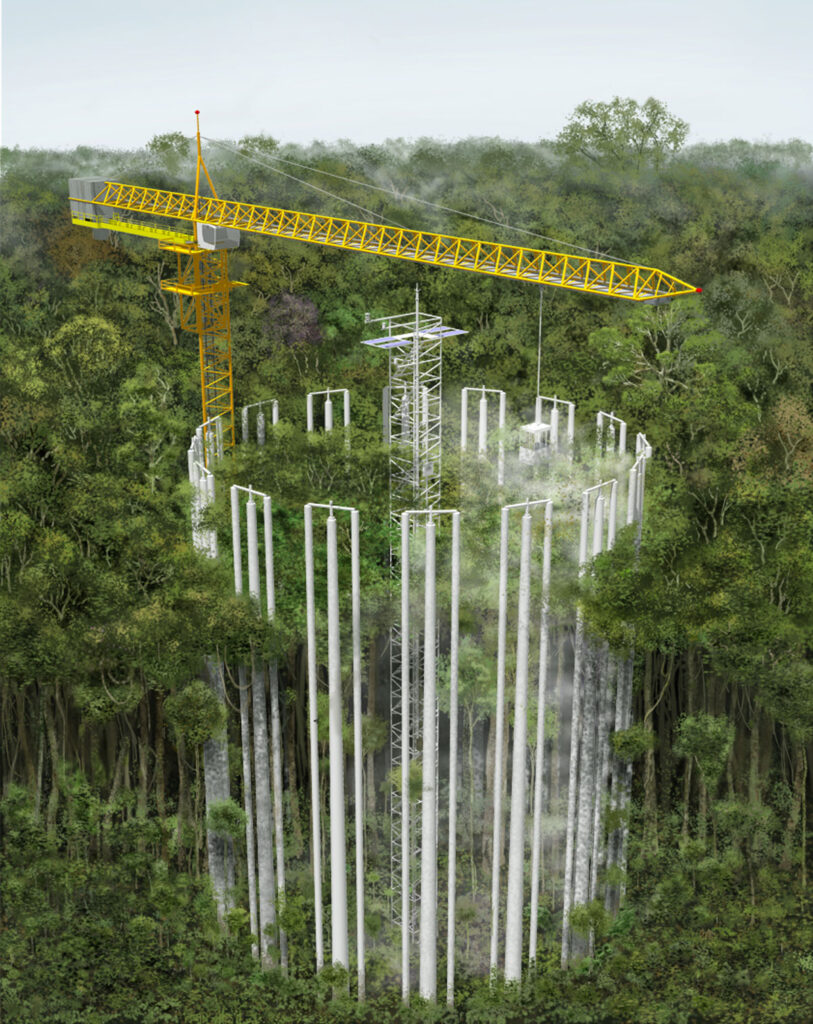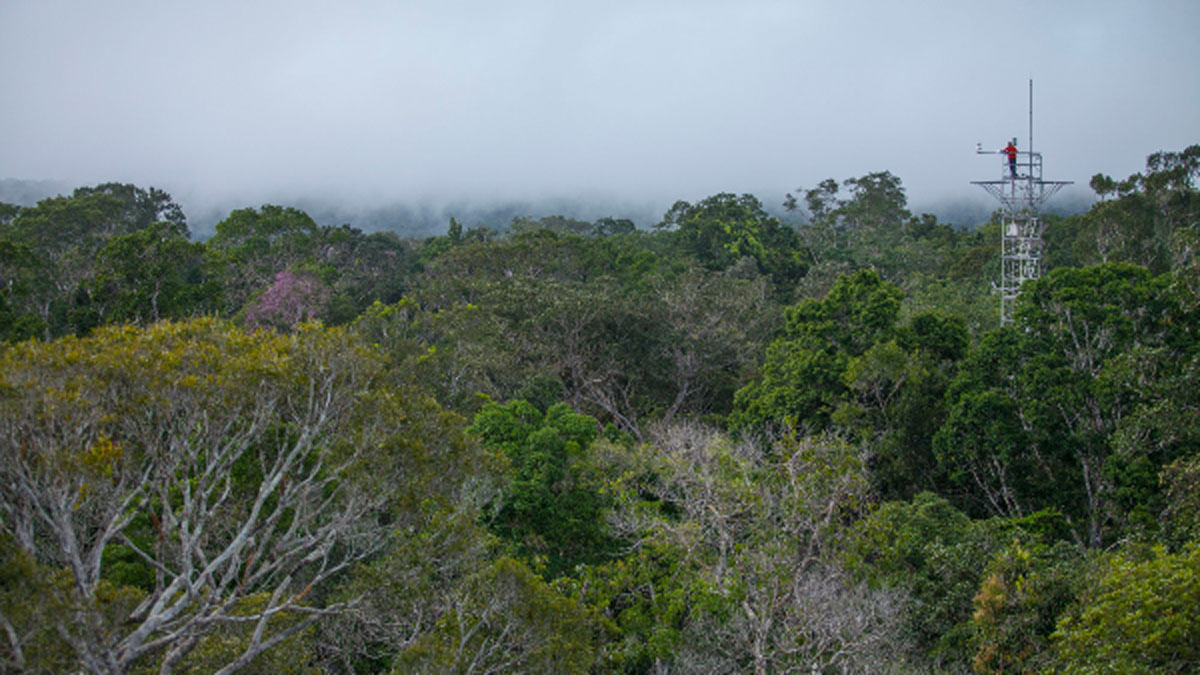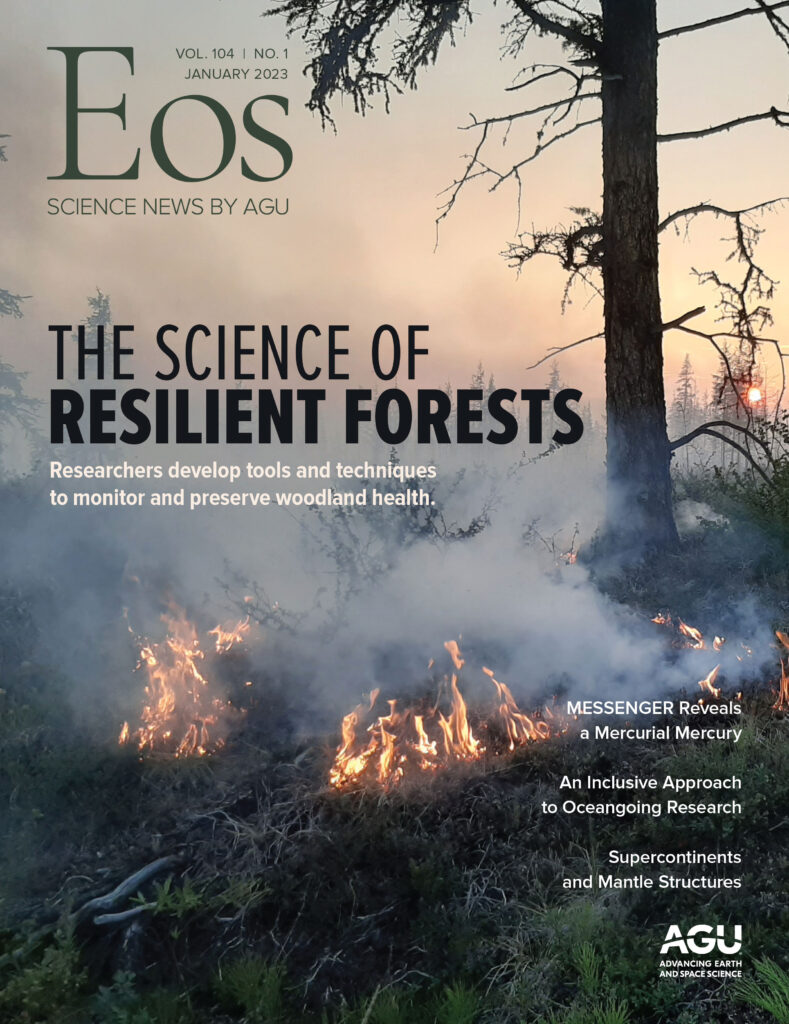Hang on to your seats: An international project is preparing to intentionally release carbon dioxide (CO2) into patches of the Amazon rain forest to understand how such ecosystems will respond to climate change. It may sound counterproductive, but the experiment will help answer an elusive question: Will the biggest tropical forest in the world continue to soak up carbon from the atmosphere as temperatures continue to rise?
With more than 20 years in planning and some $5 million in funding from science agencies in Brazil and the United Kingdom, AmazonFACE (Free-Air CO2 Enrichment) will use 35-meter-high metal towers to inject CO2 into the tree canopy at a forest research station in Manaus, Brazil. Scientists have conducted similar experiments using FACE technology in forests in Australia, Italy, and the United States, but this is the first time FACE will be deployed in a tropical environment.
The annual amount of CO2 injected into each plot (about 1,200 metric tons) is the equivalent of the carbon footprint of a single round-trip flight from New York to São Paulo, said scientists. The amount of CO2 emitted by the towers will be offset through reforestation, largely in the region outside Manaus.
“This is a fundamental experiment,” said Jerry Melillo, a biologist at Marine Biological Laboratory in Woods Hole, Mass., who is not involved with the initiative but tried to raise funding to conduct a similar experiment in the Amazon 2 decades ago.
“The tropics have been a big question mark,” he explained, in understanding forests’ carbon sink capacity in a high-emissions future. Today forests sequester about a quarter of all CO2 emitted by humans.
Carbon Sink or Carbon Source
For more than 30 years, scientists have discussed what would happen to forests as CO2 in the atmosphere continues to rise.
In theory, plants grow faster when exposed to increased amounts of the gas: Trees take up CO2 from the air through photosynthesis and transform it into sugars that may add to their biomass. Some researchers have hypothesized that great amounts of CO2 would therefore “fertilize” forests, allowing them to continue to absorb carbon and slow climate change—and that is what research using FACE in nontropical forests has suggested so far.
But critics have argued that this process might not apply to tropical forests because they have soils poor in nutrients, which would limit plant growth at some point. In a warming climate, tropical forests could start releasing more CO2 through respiration than they absorb through photosynthesis, making them carbon sources instead of carbon sinks and further accelerating climate change.
“We currently don’t know how long this fertilization effect can be sustained or if it is even real,” said David Lapola, leader of the AmazonFACE project and an ecologist at the University of Campinas in Brazil. Lapola pointed out that under a carbon-saturated environment with extreme climate change, the Amazon could become a dry and hot savanna. “That [situation] would bring catastrophic changes that would alter the climate on a continental scale,” he added.
Recent studies have suggested that the Amazon has already lost its ability to soak up carbon by more than 30% since 1990. Lapola said it is not possible to know yet whether this is due to changes in climate. The new experiment could help answer this and other questions.
Pumping Gas into the Forest
The AmazonFACE project has a long history. The original idea was proposed in the 1990s, and work on the current iteration began in 2011. But lack of funding and logistical challenges got in the way. “Can you imagine producing all these giant towers and bringing a giant crane into the dense forest?” asked Lapola.

AmazonFACE will involve a series of towers arranged in six 30-meter-diameter rings in the rain forest. Each ring will contain 16 individual towers. (Currently, two plots are under construction, and the remaining will be ready by late 2023, when the experiment starts running.) Half of the rings will pump out 50% more CO2 than we currently have in the atmosphere, while the rest will serve as controls and spray only regular air.
Sensors in the towers will record the temperature and the concentration of water vapor and CO2 in the air. Monitoring will go on for the 10 years that CO2 will be emitted from the towers, during which time researchers will also measure characteristics of the forest including leaf and root growth; the amount of carbon in the plants, soil, and air; soil nutrients; the rate of photosynthesis; and water flux. These measurements will help researchers better understand how the trees use carbon, and results will be shared with local communities and policymakers.
“This will be the most precious carbon ever emitted in the Amazon. It will help us understand and preserve the forest.”
“The big question is, Where will the carbon go?” asked Richard Norby, an ecosystem ecologist at Oak Ridge National Laboratory who is involved with AmazonFACE. If the additional carbon does not increase wood growth, for example, it may increase the growth of leaves and roots, which can quickly return the gas to the atmosphere. “Even if there is no tree growth, there almost certainly will be some important responses that will improve our understanding of how the ecosystem will react.”
“This will be the most precious carbon ever emitted in the Amazon,” said Lapola. “It will help us understand and preserve the forest.”
—Sofia Moutinho (@sofiamoutinhoBR), Science Writer


